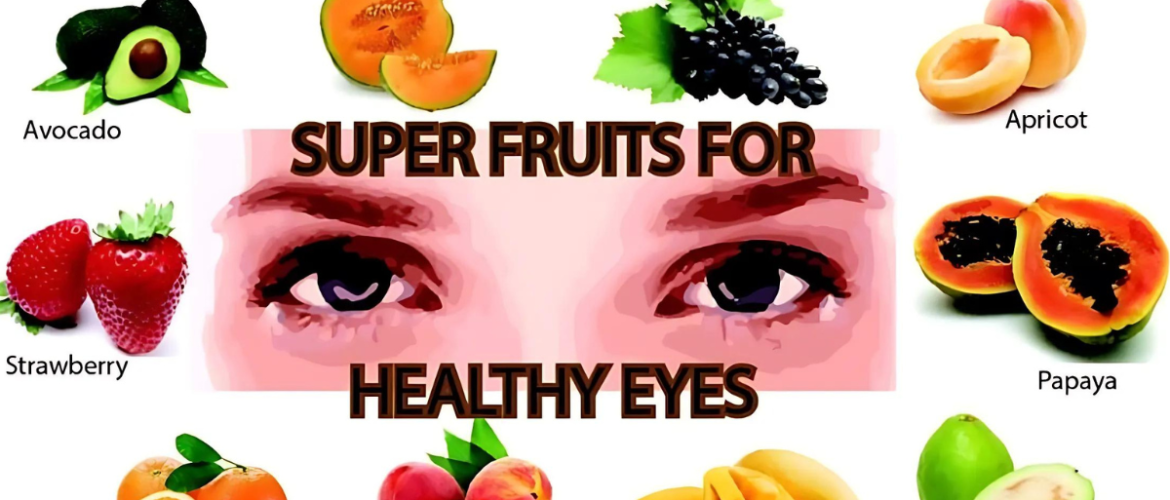In this digital world, we all are addicted to mobile, TV, laptop & computers. From the phone in your hand to the computer on your desk, you spend an increasing amount of time staring at screens. Although we need to keep our eyes healthy. But how???
The best way to keep your eyes healthy is by keeping yourself healthy. If you maintain a healthy body weight, there is less of a chance of developing diabetes, high blood pressure or high cholesterol. And eat healthy food.
Here we bring you 8 best foods that are good for your eyes.
1. Red Bell Peppers

Bell peppers give you the most vitamin C per calorie. That’s good for the blood vessels in your eyes, and science suggests it could lower your risk of getting cataracts. It’s found in many vegetables and fruits, including bokchoy, cauliflower, papayas, and strawberries. Heat will break down vitamin C, so go raw when you can. Brightly colored peppers also pack eye-friendly vitamins A and E.
2. Sunflower Seeds and Nuts:

An ounce of these seeds or almonds has half the amount of vitamin E the USDA recommends for adults each day. A large study found that vitamin E, together with other nutrients, can help slow age-related macular degeneration (AMD) from getting worse. It may also help prevent cataracts. Hazelnuts, peanuts (technically legumes), and peanut butter are also good sources of vitamin E.

Our Commitment to your Vision – Delivering Exceptional Care Every time
So don’t wait – take the first step towards better vision today by booking an appointment with us. We look forward to helping you see the world in a whole new way.
3. Dark Green Leafs

Kale, spinach, and collard greens, for example, are rich in both vitamins C and E. They also have the carotenoids lutein and zeaxanthin. These plant-based forms of vitamin A lower your risk of long-term eye diseases, including AMD and cataracts. Most people who eat Western diets don’t get enough of them.
4. Salmon

Your retinas need two types of omega-3 fatty acids to work right: DHA and EPA. You can find both in fatty fish, such as salmon, tuna, and trout, as well as other seafood. Omega-3s also seem to protect your eyes from AMD and glaucoma. Low levels of these fatty acids have been linked to dry eyes.
5. Sweet Potato

Orange-colored fruits and vegetables – like sweet potatoes, carrots, cantaloupe, mangos, and apricots — are high in beta-carotene, a form of vitamin A that helps with night vision, your eyes’ ability to adjust to darkness. One sweet potato also has more than half the vitamin C you need in a day and a little vitamin E.
6. Eggs

It’s a great package deal: The zinc in an egg will help your body use the lutein and zeaxanthin from its yolk. The yellow-orange color of these compounds blocks harmful blue light from damaging your retina. They help boost the amount of protective pigment in the macula, the part of your eye that controls central vision.
7. Broccoli and Brussel sprouts

These related veggies come with another winning combination of nutrients: vitamin A (as lutein, zeaxanthin, and beta-carotene), vitamin C, and vitamin E. They’re all antioxidants that protect the cells in your eyes from free radicals, a type of unstable molecule that breaks down healthy tissue. Your retinas are especially vulnerable.
8. Chickpeas and Beans

Prefer a vegetarian, low-fat, high-fiber option to help keep your vision sharp at night and slow AMD? Chickpeas are also high in zinc, as are black-eyed peas, kidney beans, and lentils. A can of baked beans will do the job, too.
For more updates do follow us on all social media links.
Source: https://www.webmd.com/eye-health/ss/slideshow-eyes-sight-foods

No comments yet.